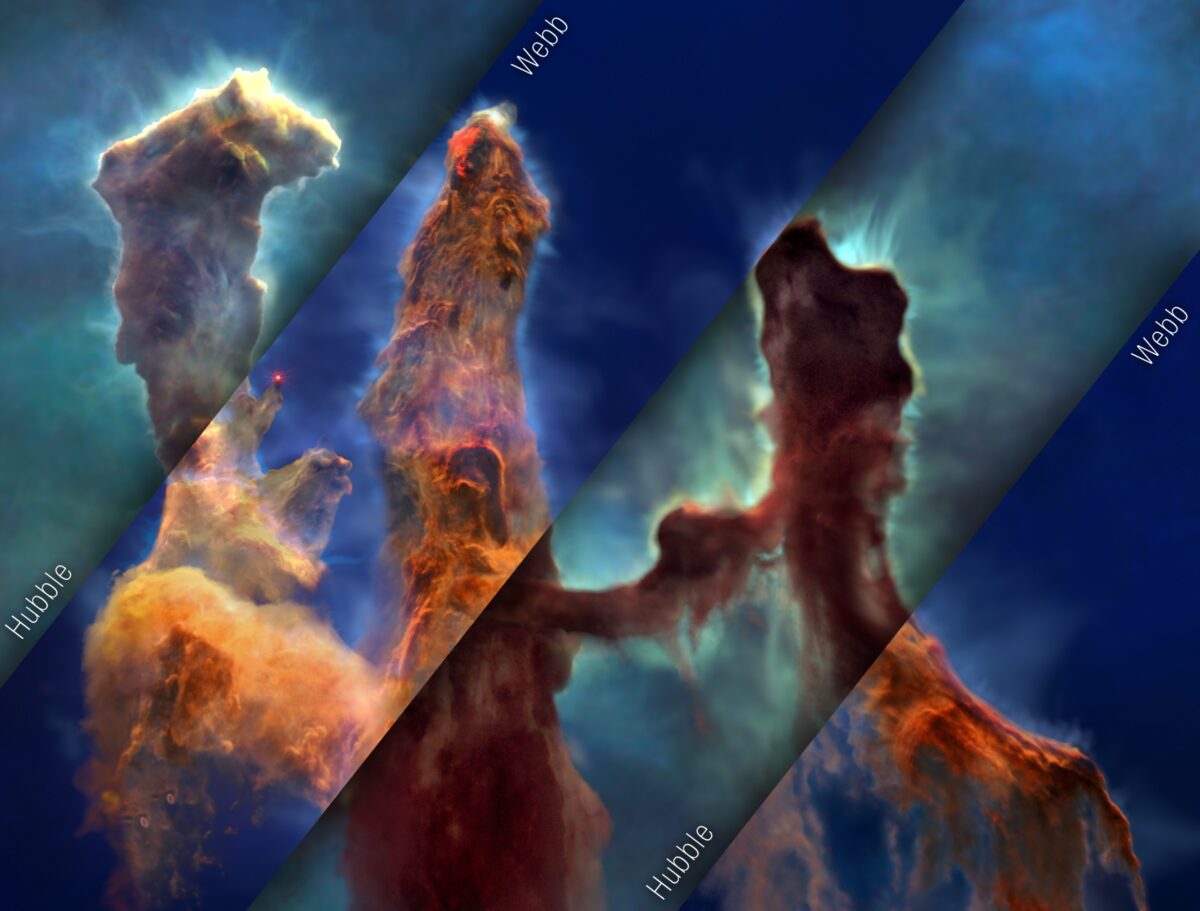The animation is a result of collaboration between two of NASA’s most powerful space telescopes — the Hubble Space Telescope and the James Webb Space Telescope.

The Pillars of Creation as seen by the Hubble Space Telescope and the James Webb Space Telescope. Credit: Greg Bacon, Ralf Crawford, Joseph DePasquale, Leah Hustak, Christian Nieves, Joseph Olmsted, Alyssa Pagan, and Frank Summers (STScI), NASA’s Universe of Learning
The Pillars of Creation, a series of elongated clouds teeming with star formation, have intrigued researchers and wowed the public ever since the Hubble Space Telescope captured their famous portrait in 1995. In collaboration with the James Webb Space Telescope (JWST), the star-birthing clouds are featured in a new video that renders them in 3D. The structures that appear in the animation are not a result of artistic interpretation — they’re based on observational data published in a paper led by Anna McLeod, an astrophysicist at the University of Durham in the U.K.
The visualization highlights the pillars’ structures while noting the differences in detail based on which telescope imaged it. In JWST’s version, the clouds are sharper, with notable changes in color and detail. In Hubble’s version, the clouds are blurry, with hints of bright yellow ionized gas outlining the clouds. The contrasting views showcase how collaboration between two space observatories can bring out different details of the pillars and give a complete portrait of a deep-sky object.
The Pillars of Creation are 6,500 light-years from Earth in the Eagle Nebula (M16).
Seeing in a different light
The views from each telescope look different because of how they view the universe. The Hubble Space Telescope sees the universe in visible light, while JWST is sensitive to infrared, allowing it to see objects that glow at cooler temperatures. JWST to see through dust and view hidden newborn stars. The winds of some of these young stars are constantly eroding the pillars’ cool, cosmic dust.
“When we combine observations from NASA’s space telescopes across different wavelengths of light, we broaden our understanding of the universe,” said Mark Clampin, Astrophysics Division director at NASA Headquarters in Washington, in a NASA press release. “The Pillars of Creation region continues to offer us new insights that hone our understanding of how stars form. Now, with this new visualization, everyone can experience this rich, captivating landscape in a new way.” The video was produced by the Space Telescope Science Institute (STScI) in Baltimore, which operates Hubble and JWST, and NASA’s Universe of Learning.

